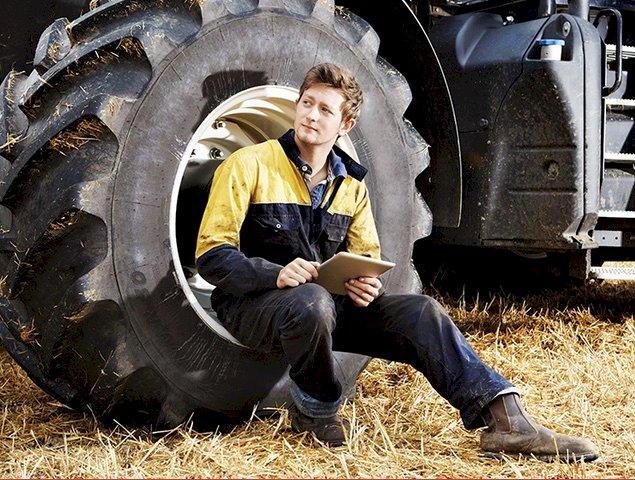Ag Tech Sunday - Farmers value digital engagement, but want suppliers to step up their game
- By: "Farm Tender" News
- Ag Tech News
- May 02, 2021
- 593 views
- Share

By David Fiocco, Vasanth Ganesan, Liz Harrison, and Jake Pawlowski - McKinsey & Company.
Download the full report here.
Agriculture suppliers have the potential to grow their e-commerce base by a factor of five—but today’s online interactions won’t get them there.
McKinsey surveyed more than 800 row and specialty crop farmers across the United States over the past several months as a follow-up to our 2018 study. We talked with farmers, owners, and field managers, including those with large operations as well as those with just a few hundred acres.
What we learned is that farmers are increasingly interacting and buying online, but they’ll need higher-quality and more personalized interactions to keep doing so. Winning agriculture companies will engage online early and sustain engagement across the buying journey through digital and physical channels.
Digital engagement is well rooted and the preferred means for many
Farmers’ comfort with digital channels has grown markedly since 2018. Roughly 50 percent say they are willing to buy agricultural products online and twice the number of farmers prefer online when repurchasing familiar items.
Two-thirds of farmers also use the web and their mobile devices for research and planning—compared to less than half who said the same two years ago. And more than 50 percent prefer digital channels when evaluating products—up from roughly one-third in 2018.
Adoption has backtracked in areas such as purchasing
Although more farmers are engaging digitally, not all have found the experience to their liking. Nowhere was this more true than in the purchasing process itself.
In 2018, 29 percent of buyers said they were open to buying inputs online. Two years later, that number has fallen to just 12 percent—with the result that less than half the number of farmers who bought goods online in 2018 say they prefer those channels now.
What soured for them? One reason is that digital interactions aren’t delivering the convenience that farmers want—which is why many go online to browse and buy in the first place. Compared to the intuitive e-commerce experiences that farmers are accustomed to elsewhere, many agriculture solutions come up short.
Basic elements such as product availability, specifications, and pricing are often hard to find, difficult to use, or missing altogether. The biggest source of frustration for farmers is the inability to easily search and compare products.
Farmers also chafe at the generic experience of provider websites and apps—especially compared to remote and in-person interactions that offer a more individualized feel. Growers want a good deal, an easy experience, and advice they can count on, and they also want that experience personalized—online and off.
Farmers like a mix of human and digital interactions when conducting product research
Although 53 percent of farmers rely on digital interactions when researching products, 64 percent turn to friends, peer farmers, and their family.
When asked which sources of information are most helpful when conducting initial product research and comparing brands, farmers ranked human sources of information at the top, with 50 to 60 percent stating they value the advice of agronomists and peer farmers.
Farm size and farmer demographics influence digital behaviors
A farmer’s acreage, age, and gender inform purchasing patterns in important ways. For example, small farmers express high interest in engaging digitally across virtually every stage of the buying journey.
Nearly three-quarters research and plan online compared to less than two thirds of larger farmers. And 43 percent plan their next season and make repurchases over digital channels, compared to just 20 percent of larger farmers.
As is true of their age cohorts elsewhere, young growers are enthusiastic digital adopters. They strongly prefer online experiences for product support and repurchase activities compared to older growers.
Across the buying journey, women are the most comfortable using digital channels. Nearly twice as many women as men prefer digital channels for re-purchasing, and substantially more women research, plan, and evaluate their product needs online.
To inspire delight, trust, and digital adoption, suppliers, must personalize
The opportunity to grow digital engagement among farmers is significant—with five times more growers open to using digital channels to make agricultural purchases than today’s levels. But success in driving online adoption will require more creative approaches and greater effort than before. As it stands now, only one out of ten farmers finds digital sources of agriculture information sufficient for their needs.
To win farmer trust, agriculture suppliers must tailor their outreach and offerings. Providing nonstandard pricing is especially important. Farmers used to negotiating terms with their field representatives want similarly individualized pricing when engaging digitally. They also want a say in when inputs will be delivered, with the ability to request non-standard delivery times and locations. Farmers specifically cited the lack of personalization in current ag platforms as a key barrier in making purchases online.
Farmers want experiences tailored to each stage
Agriculture suppliers also need to be more attuned to the interplay between channels. Growers rely on their sales representatives for detailed product information, expertise and value. And they’re looking for easy ordering and a better bargain when using e-commerce. The winning suppliers will be those that recognize these omnichannel preferences and deliver accordingly.
Leading agriculture suppliers will focus on three imperatives:
- Increase grower engagement through digital channels by addressing persistent pain points
- Spur online purchases and trust through personalized experiences that delight the grower
- Recognize the crucial interplay between online and offline channels across the grower buying journey and optimize touchpoints accordingly
- Suppliers that embrace these imperatives will cultivate stronger and more enduring grower relationships, and gain clear advantage in a more competitive playing field.










Share Ag News Via